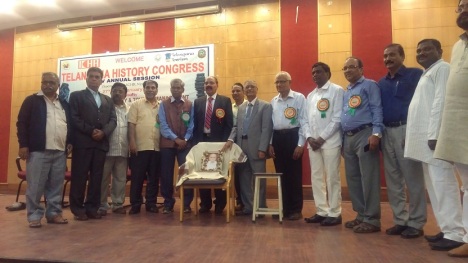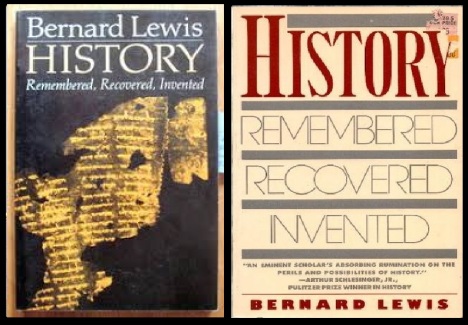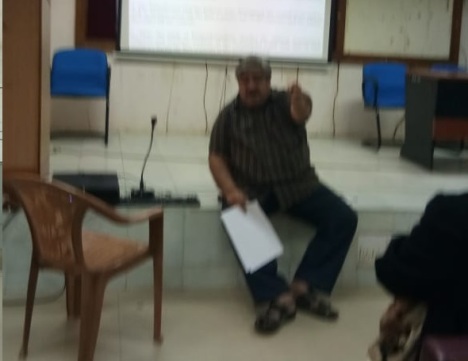The Fourth session of Telangana History Congress held at the Kakatiya University on January 27th and 28th 2019 [2]

- S. S. Seshan’s paper continues………………………………………………..
Judicial Enquiry Commission: The Resident, instituted a Commission of Enquiry consisting of 6 members; three were nominated by the Resident and the other three were the nominees of the Nizam’s administration. The Commission finally found that Mubarez was engaged in a conspiracy with the Nawab of Kurnool and several others with a view to overthrow the Nizam and declare himself as the ruler and also to bring an insurrection against the British.

Network of spies[1]: The Enquiry Commission became central in unearthing the contemplated insurrection of the Nawab of Kurnool. There was a letter written by Mubarez to the Nawab of Kurnool that was intercepted by the British agents. Mubarez in that letter had spelled out his plans for the final assault on the British requesting the Nawab to dispatch the needed arms for such an attack. If only that letter has reached the Nawab, and had he acted, the Enquiry Commission felt, “the results would have been very disastrous”. The letter was concealed in an amulet and was to be delivered to the Nawab of Kurnool. But on the way to Kurnool, fearing the capture by the British, Muhammad Khan the spy, tied the amulet to the hand of an old beggar woman living in a sarai, where he himself took shelter in the guise of a traveller. The amulet was recovered by the guards while combing the area and thus the entire conspiracy came to light. The letter thus brought to light the role of the Nawab of Kurnool, in the conspiracy against the English. The British at Madras, immediately sent a large military contingent to deal with Kurnool. The Nawab’s armies were defeated in October, 1839 and the Nawab was deported to Tiruchirapalle (formerly Trichinopoly in English), where he was imprisoned and Kurnool was taken over by the Company administration. Rasool Khan was murdered by one of his own servants in the prison. The Enquiry Commission also felt that Mubarez, apart from being a hand in glove with the Nawab of Kurnool, also tried to spread sedition among the Muslim sepoys stationed in Secunderabad. As a result, Mubarez had to spend the rest of his life as a prisoner in the Golconda fort till he died on June 25, 1854[2].

27-09-2019- after lunch session – Dr Raja Reddy

Raja Reddy on the richest Nizam of the world: Osman Ali Khan, Mukarram Jahs grandfather, was crowned the eighth Nizam of Hyderabad to become the richest ruler in the world with an inheritance worth US $2 billion, lost a wife to AIDS and turned his incredible fortune to dust in the Australian outback, all in the course of 30 years.

Now a balding 72-year-old Mukarram Jah, leads a secret life, with very few people in his own neighbourhood in Turkey aware of his existence or his whereabouts. Mukarram Jah was anointed the Nizam of Hyderabad and Berar, the richest and most powerful state in the sub-continent. It is said that Mukarram could trace his lineage back 34 generations on his fathers side to the First Caliph of Islam, Abu Bakr. According to Zubrzycki, Mukarram Jahs grandfather Osman Ali Khan, was once described as being richer than all the Fords, Rockefellers and Morgans put together. Ironically, says Zubrzycki, Jah was short of cash. There were very few rupees in the kitty to pay maintenance for the 14,792 relatives, harems with 42 ageing concubines, hundreds of illegitimate children, and 14,000 staff consisting of retainers, guards, cooks and other employees his grandfather had been caring for.

Helen Simmons asked Mukarram for a divorce but was soon diagnosed as being HIV-positive, like her homosexual friends. She died of AIDS in 1989, the first Australian woman to do so, at the age of 41, but Mukarram was cleared of the virus after tests in Switzerland. Nizam used to send convicts to Andaman and Nicobar islands and the British collected transport and maintenance charges from him. For more details on the Nizam with photographs etc., read here[3].

5.00 to 7.00 pm – Y. Sudharshan Rao: He delivered the Prof Mukkamala Radhakrishna Sarma Memorial lecture. He was talking with philosophical sting and much abstract issues, the students obviously did not like. Based on Benard Lewis book, he started interpreting as to how, “history – is remembered, recovered and invented” in the context of Telangana. He concluded[4], “Again, there was a great spurt in writing history of Telugu people when the linguistic states were formed. Regional histories and local histories are pursued with cultural, social and political themes. While mainstream Indian historiography has changed its perspective from national to Marxist, the regional histories continued to be biographic, sectional and local. With the recent division of the state into Telangana and Andhra Pradesh sharing Telugu population, perhaps, the entry of third genre of ‘invented history’ as rampant in the West may have to wait in our regional sphere”.

27-09-2019- Memorial lecture.VIPs stand together

In fact, they were busy with their cellphones, but he continued for two hours. As I used to listen to many-many such memorial lectures, I find that this has become a ritual as the speaker goes on talks or reads from his paper without caring for others. And mostly, the listeners were forced to sit and listen to him, of course, 50% of them would be sleeping also. Later, he himself expressed that his speech was taken by the students differently!

7.00 to 8.30 pm – Cultural programme: The troupe depicted in an emotional way, “The origin of Telangana state,” projecting K. Chandrasekhara Rao since his early days, as to how he spearheaded the movement. However, too much “separatist” ideology injected in their narrative made others uncomfortable. Particularly, those who come from other states might not find any difference between the Telugu speaking people of both states.
The second day 28-01-2019 proceedings – 10.00 to 10.42 am: Jaikishan gave a lengthy presentation on iron, steel, paper etc of Telangana. He claimed that he was the only archaeo-metallurgist doing research in industrial archaeology etc. First he was telling about the iron and steel manufactured in India that were famous in the medieval period. He was telling the story of “Damascus sword,” how it roused the interests of the Europeans to test for anti-rustic properties etc. He pointed out based on Pliny as to how Romans decided not to buy Indian steel and so on. He was mentioning about “kotla” paper manufactured in the villages of Telangana that was used by the Moghuls and also nexported to London. Most the paper manufacturers had been Muslims. The ingredients for paper manufacture were soaked and kept for 24-30 hours and then used for rolling. When I pointed out that he did not mention that Indian steel as “Wootz” and also about Dr S. Kalyanaraman who has done exhaustive research in these areas, he tried to manage and told that he knew him and he has all the books of him. Meanwhile, somebody intervened and said that he had been an expert in the field and he could talk hours together on the subject!

10.53 to 11.08 am – Kurra Jitendra Babu: He asserted that, “The papers presented so far has been useless…” Yesterday, one expert talked more than one-and-half hours and when the students were asked what they has understood, they replied “nothing…..,” and some commented that, “…….they could have gone for a movie………………” Then, he tried show that Indians knew everything before westerners. Neils Bohr and others were indebted to Acharya Nagarjuna, Einestein dedicated his work to Thikkanna for his E = mc2, and so on. He went on to assert[5], that “Sanskrit itself is a refinement of different types of Prakrit used by the different people of India…The very fact that there are no Sanskrit manuscripts found in Kalinga kingdom (modern day Odisha) is evidence enough to say that Sanskrit is not the linguistic ancestor of Telugu…… No research is being done to prove or disprove these new theories,……..unless the material is available to scholars of both the States there will be no more research”. Itappears that he has been voicing in this way at other places also[6]. The Telangana dancers have been depicted in the gopuram of Big temple Tanjore. Giriraja kavi’s grand son of Tyagaraja went to Thanjavur and thus, they were also influenced by the people of Telangana[7]. And thus, he tried to glorify Telanga for origin of everything. While Pali was the linguistic ancestor of Telugu spoken in Andhra region, a form of Prakrit was the linguistic ancestor of Telugu spoken in Telangana, he said.

I thank my friend Sudhakar Kundur for providing the following four photographs of my presentation

KVR presenting paper – locating Telangana- on “Kunjarakunjadesa of South India and its connection with the South East Asian Civilization”

11.00 to 11.30 am – K. V. Ramakrishna Rao: I resented my paper on “Kunjarakunjadesa of South India and its connection with the South East Asian Civilization,” and located it at the border of Andhra and Kalinga with the following conclusion:
- The Changgal inscription proves the close, well-connected maritime trade contacts of the importers-exporters one side and the warriors, religious groups on the other side.
- The language used, grantha script applied and the grammar-syntax exploited prove that the migration of such knowledge transfer must have taken place at least 50-100 years to attain such status far away from India. However, such transfer must have taken place natural, peaceful and acceptable to the local people.
- Kunjarakunjadesa expression has been used associating with elephants, elephant like wrestlers and great architects. As the elephants have been used significantly connected with forest-wooden industry, building temples and other secular structures, such elephant connected experts were adorned with titles of Kunjaramallar, Kunjaramallan, Kunjaramalla Peruntacchan and so on.
- Elephant (Kunjaram) and dwarf (Kunjaran) have been associated with Siva, as here, Agastya was associated with the building of temples on the hill and creator of Lingam, acting as Dhaksha, Architect, Brahma, or Viswakarma.
- Cholas engaged elephant army, as they required for battles and as well as for infrastructure development.
- The Andhra-Kalinga area had been centrally located on the Coromandel Coast between the Sri Lanka and numerous islands and Bengal and beyond, the Cholas wanted to control and exploit the area strategically. The erection of victory pillar on the Mahendragiri hill can also be noted in the context.
- The Cholas knew evidently, the Sailendras’ connection with Sumatra / Java / Kedah and also with the Palas and the Chinese, and hence had cardial relationship initially, through the Buddhists (Vihara constructed at Nagappattinam).
- As during the first centuries, the Palavas had been so active in those areas, they had all sorts of experts migrated already there and settled down. Here, Kalinga-Andhra coastal areas played a crucial role.
- The Satavahanas and the Pallavas were dominating the coastal areas and as well as maritime areas till the first centuries ton 7th-8thcenturies and the Cholas thereafter till 13th century.
- Thus, the study of Kunjarakunjadesa, clarifies the cultural, commercial, religious and maritime contacts of the Coromandel Coast with that of SEA countries during the first centuries to the medieval period.

KVR responding to querries
There were querries and I answered.
© K. V. Ramakrishna Rao
02-03-2019

My PPT presentation

I thank my friend Sudhakar Kundur for providing the above four photographs of my presentation
[1] K S S Seshan Mubarez-ud-Daulah’s era: Of passion, rebellion and conspiracy, in The Hindu, Hyderabad, JUNE 10, 2017 15:32 IST; UPDATED: JUNE 10, 2017 15:32 IST.
[2] https://www.thehindu.com/society/history-and-culture/mubarez-ud-daulahs-era-of-passion-rebellion-and-conspiracy/article18955189.ece
[3] His Exalted Highness Prince Mukarram Jah Bahadur, 8th Nizam of Hyderabad- Interviews and feature stories from American, Australian, British and Indian newspapers and magazines, http://cvxmelody.50webs.com/
[4] Based on the paper circulated to the delegates of THC on 27-01-2019 evening in the hall.
[5] The Hindu, Call for common Telugu research centre, by G. Venkataramana Rao Vijayawada:, AUGUST 19, 2014 00:21 IST; UPDATED: MAY 08, 2017 12:00 IST
[6] https://www.thehindu.com/news/cities/Vijayawada/call-for-common-telugu-research-centre/article11205607.ece
[7] Giriraja was born in Kakarla village, Cumbum taluk in Prakasham district (AP) has produced many of the important cultural figures of South India. Among the greatest of those was Tyagaraja, whose mother was a daughter of Giriraja Kavi. Giriraja Kavi played a major role in influencing the formative years of his celebrated grandson Tyagaraja. He was instrumental in securing a place at court for his grandson, a position that Tyagaraja soon abjured. It is to Tyagaraja’s credit that Giriraja Kavi’s musical work, created during an era that was dominated by the trinity of Carnatic music, has secured him a lasting place of honour among the greats of Carnatic music.
Filed under: archaeology, cast iron, Changgal inscription, chemical, chola, cholas, chronology, civilization, colonial, controversy, coromandel, crucible, crucible iron, crucible steel, Helen Simmons, historicity, historiography, history, Iron, iron age, Jaikishan, K. S. S. Seshan, kakatiya, kakatiya university, Kunjarakunjadesa, meteorite, meteorite iron, mineral, mining, Muhammad Khan, Mukarram Jahs, Mukkamala Radhakrishna Sarma, Osman Ali Khan, regionalism, S. Kalyanaraman, smelt, smelting, state, steel, urukku, Veda, wahabi, wahabi movement, warangal, wootz, Zubrzycki | Tagged: Changgal inscription, coromandel, Helen Simmons, Kunjarakunjadesa, Muhammad Khan, Mukarram Jahs, Mukkamala Radhakrishna Sarma, Osman Ali Khan, S. Kalyanaraman, wahabi, Wahabi conspiracy, wahabi movement, Zubrzycki | Leave a comment »

